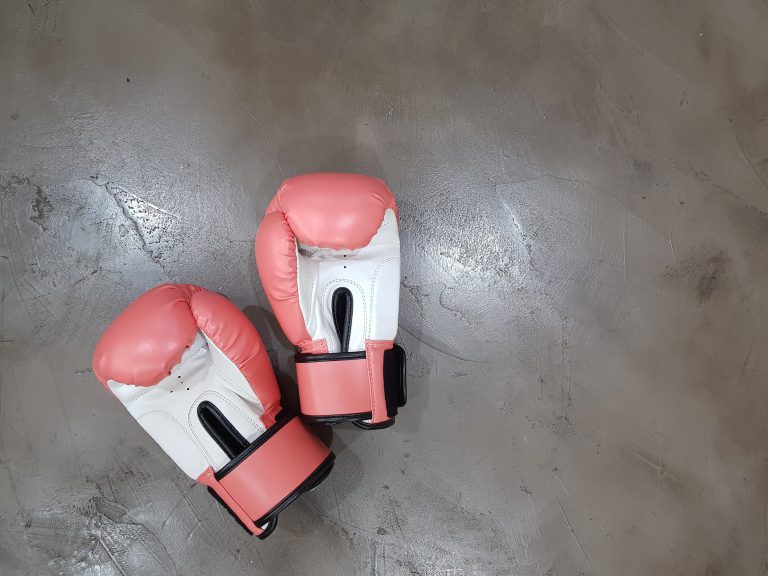Karate Belts – How long does it take to earn each belt?
Karate is a popular martial art that has been practiced around the world for centuries. One of the most recognizable aspects of karate is the system of belts that students earn as they progress through the ranks of the art. These belts serve as a visual representation of a student’s skill level and are an important aspect of the karate training experience. In this post, we will explore the different karate belts and how long it typically takes for students to earn each one.
The History of Karate Belts
The system of colored belts that is used in modern karate has its roots in the Japanese martial art of Judo. The founder of Judo, Jigoro Kano, introduced a system of colored belts in the late 19th century to track students‘ progress through the art. The colors of these belts corresponded to the colors of the rainbow, beginning with white and ending with black. This system was later adopted by other martial arts, including karate.
The Different Karate Belts
The karate belt system typically consists of ten levels, each denoted by a different color of belt. The order of these belts varies somewhat depending on the particular style of karate being practiced, but the following is a common progression:
1. White Belt
2. Yellow Belt
3. Orange Belt
4. Green Belt
5. Blue Belt
6. Purple Belt
7. Brown Belt
8. Red Belt
9. Black Belt
10. Dan (Black Belt Levels)
How Long Does it Take to Earn Each Belt?
The time it takes to earn each karate belt varies widely depending on the student’s dedication, the frequency of their training, and the requirements of their particular dojo (karate school). That being said, here is a rough estimate of the time it typically takes to earn each belt:
1. White Belt – beginner level, typically earned after a few months of training
2. Yellow Belt – 6-12 months after starting training
3. Orange Belt – 6-12 months after earning the yellow belt
4. Green Belt – 12-18 months after earning the orange belt
5. Blue Belt – 1-2 years after earning the green belt
6. Purple Belt – 2-3 years after earning the blue belt
7. Brown Belt – 3-5 years after earning the purple belt
8. Red Belt – 5-7 years after earning the brown belt
9. Black Belt – 5-10 years after earning the red belt, depending on the student’s dedication and the requirements of their dojo.
10. Dan (Black Belt Levels) – After earning the black belt, students can earn additional dan levels (or degrees) by continuing to train and improve their skills. Typically, it takes at least 4-5 years to earn the first dan level.
It’s important to note that these estimates are just that – estimates. Every dojo and every student is different, so the time it takes to earn each belt can vary widely.
What Are the Requirements for Earning Each Belt?
The specific requirements for earning each belt also vary from dojo to dojo, but typically involve a combination of skills and knowledge. For example, a student might need to demonstrate proficiency in various techniques such as punches, kicks, and blocks. They might also need to learn kata (pre-arranged movements) or participate in sparring matches. Additionally, students are often required to show knowledge of karate terminology and history, and to exhibit good character traits such as respect, self-control, and perseverance.
In
Karate Belts: How Long Does It Take?
Introduction: Understanding the Belt System in Karate
Karate is a martial art that originated in Okinawa, Japan. It is a striking-based martial art that involves punches, kicks, and strikes with the hands, feet, and other parts of the body. In karate, the belt system is used to indicate a student’s level of skill and rank.
The belt system in karate is divided into several levels. Beginners start with a white belt, and progress through various colors as they gain experience and skill. The most common belt colors in karate are white, yellow, orange, green, blue, brown, and black. Each color represents a certain level of skill and mastery.
One of the most common questions asked by people starting karate is how long it takes to progress through the belt system. In this blog post, we’ll answer that question and clear up some common misconceptions about the karate belt system.
FAQ: How Long Does It Take to Progress Through the Karate Belt System?
1. How long does it take to get to the first belt?
The first belt in karate is the white belt. It is the starting point for all beginners. The time it takes to progress from a white belt to a yellow belt varies depending on the school and the individual student’s dedication to training. Generally, it takes about 3-6 months of consistent training to progress from a white belt to a yellow belt.
2. How long does it take to get a black belt?
The black belt is the highest rank in karate. The time it takes to get a black belt varies depending on the school, the individual student’s dedication to training, and the specific requirements of the school. In general, it takes around 3-5 years of consistent training to earn a black belt in karate. However, some schools have longer requirements, taking up to 10 years or more to earn a black belt.
3. Can I progress through the belt system faster than the average student?
It is possible to progress through the belt system faster than the average student. However, this requires a high level of dedication and practice. Students who attend classes regularly, participate in extra training sessions, and consistently demonstrate their skill and mastery can progress through the belt system faster. However, it is important to note that in karate, quality is always more important than quantity. Rushing through the belt system without gaining a proper understanding and mastery of each level can result in a less skilled and less disciplined martial artist.
4. Can I progress through the belt system slower than the average student?
Yes, it is possible to progress through the belt system slower than the average student. Each student learns at their own pace, and some may take longer to master certain techniques or concepts. Teachers should be aware of their students‘ individual learning styles and pace, and should not rush or pressure students to progress faster than they are able to.
5. Are there any age restrictions for progressing through the belt system?
There are no age restrictions for progressing through the belt system in karate. Students of all ages can learn and practice karate. However, children and adults may progress at different rates, depending on their physical abilities, maturity, and dedication to training.
Karate Belts: How Long Does It Take?
Introduction
Karate is a popular martial art that originated in Japan. It is known for its disciplined practice and focus on self-defense techniques. The ranking system in Karate is signified by belts that range in colors from white to black. The question that comes up frequently is how long it takes to progress through the different belts. In this post, we will provide you with a comprehensive guide on the karate belt system and the time frame it takes to achieve each rank.
The Karate Belt System
The karate belt system is divided into two main sections, the kyū grades and the dan grades. The kyū grades are for beginners and intermediate students. The dan grades are for advanced students and experts. There are ten kyū grades and ten dan grades. Students start at the white belt and work their way up to the black belts.
Kyū Grades
The kyū grades consist of nine colored belts and the white belt, which is the starting rank. The colored belts are orange, red, yellow, green, blue, purple, brown, and black. The time it takes to achieve each rank varies depending on the student’s performance and the individual dojo’s requirements.
White Belt
The white belt is the starting rank in karate. It symbolizes purity and innocence. It takes three to six months of regular practice to progress to the next rank. During this time, students learn the basic karate techniques, stances, and etiquette.
Orange Belt
The orange belt is the second rank in the karate belt system. It symbolizes growth and potential. It takes six to twelve months of regular practice to progress to this rank. Students learn more advanced karate techniques, including kicks, punches, and blocks.
Red Belt
The red belt is the third rank in the karate belt system. It symbolizes strength and courage. It takes one to two years of regular practice to progress to this rank. Students learn advanced techniques and start to prepare for the brown belt.
Yellow Belt
The yellow belt is the fourth rank in the karate belt system. It symbolizes the sun and enlightenment. It takes one to two years of regular practice to progress to this rank. Students learn more advanced techniques and start to develop their own karate style.
Green Belt
The green belt is the fifth rank in the karate belt system. It symbolizes growth and a fresh start. It takes two to three years of regular practice to progress to this rank. Students learn complex techniques and start to hone their skills.
Blue Belt
The blue belt is the sixth rank in the karate belt system. It symbolizes the sky and infinite possibilities. It takes two to four years of practice to progress to this rank. Students learn difficult katas and start to focus on their inner strength and mental discipline.
Purple Belt
The purple belt is the seventh rank in the karate belt system. It symbolizes mystery and challenge. It takes three to five years of regular practice to progress to this rank. Students learn advanced self-defense techniques, multiple attackers, and weapon use.
Brown Belt
The brown belt is the eighth rank in the karate belt system. It symbolizes humility and respect. It takes three to six years of regular practice to progress to this rank. Students focus more on breathing techniques, meditation, and inner strength.
Black Belt
The black belt is the ninth rank in the karate belt system. It symbolizes mastery and achievement. It takes four to ten years of regular practice to progress to this rank. Students have to undergo a rigorous test to receive their black belt. It includes multiple areas of testing, including sparring, board breaking, and katas. Achieving a black belt is a significant accomplishment and one of the ultimate goals in karate.
Dan Grades
The dan grades consist of ten black belt ranks. It takes several years of practice and dedication to achieve the higher dan ranks. The black belt is considered a starting rank in the dan grading system.
Conclusion
The karate belt system is a great way to measure a student’s progress and development in the martial art. The time it takes to achieve each rank varies, depending on the individual’s dedication and the dojo’s requirements. It is important to remember that karate is a journey and not a destination. The ultimate goal is to develop a strong mind, body, and spirit, which can be achieved with discipline, patience, and hard work.
Inhaltsverzeichnis






